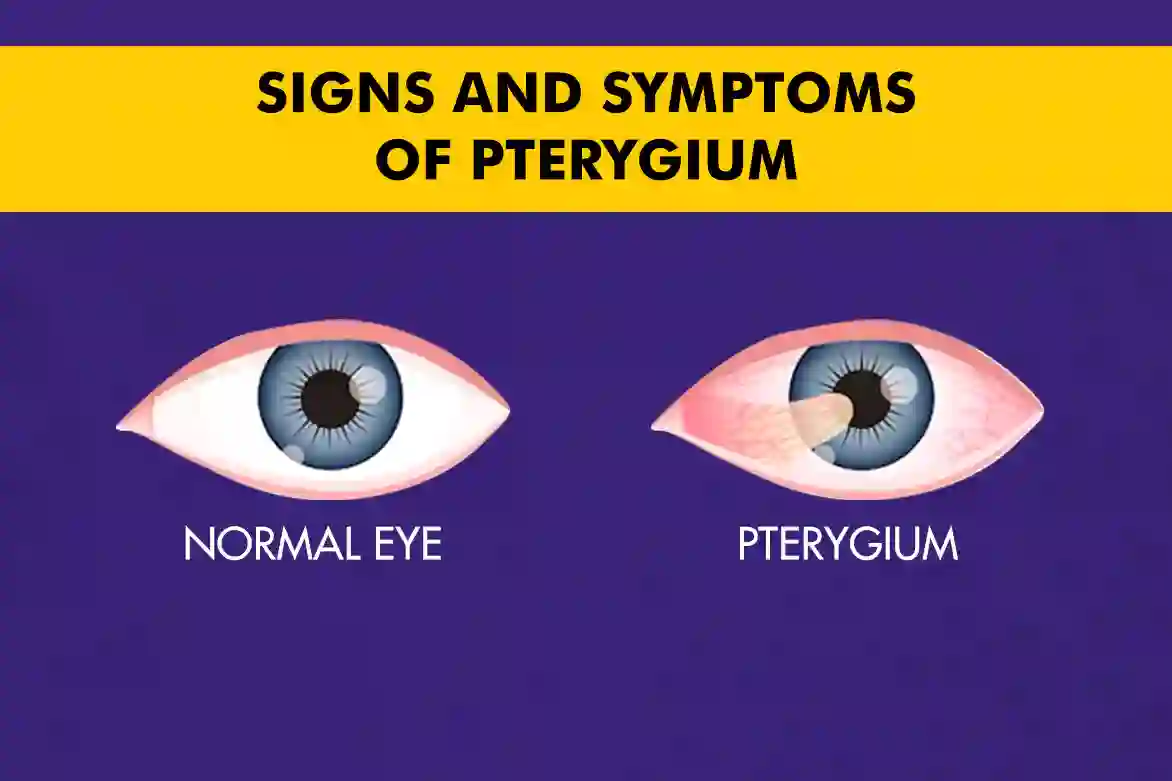Pterygium is a common eye condition that affects many people worldwide. It is characterized by the growth of a fleshy, triangular tissue on the conjunctiva, which is the clear membrane that covers the white part of the eye. This condition usually develops on the side closest to the nose and can gradually extend onto the cornea, the transparent front part of the eye. In this blog post, we will explore the common pterygium symptoms, understand its causes, and learn about the available treatment options. We will also provide some helpful tips on prevention and address frequently asked questions about this condition.
What Is Pterygium?
Before delving into the pterygium symptoms, it is important to understand the condition itself. Pterygium is believed to be caused by prolonged exposure to ultraviolet (UV) radiation from the sun. This exposure can lead to the development of abnormal tissue growth on the conjunctiva. Other factors that may contribute to the development of pterygium include dry eye, dust, wind, and certain genetic factors.
Pterygium is more common in people who live in sunny, tropical regions and spend a lot of time outdoors. It can affect individuals of all ages, but it is more commonly seen in adults aged 20 to 40 years. Although pterygium is generally benign and non-cancerous, it can cause discomfort and affect vision if it grows large enough to cover the cornea.
Common Signs of Pterygium
The most noticeable pterygium symptoms or sign is the presence of a fleshy, triangular growth on the white part of the eye. This growth may start small and gradually enlarge over time. Other common signs include:
- Visible growth on the surface of the eye (conjunctiva): Pterygium is characterized by a fleshy growth on the conjunctiva (the clear tissue covering the white part of the eye). This growth can vary in size and appearance, often resembling a wedge-shaped bump.
- Redness and inflammation of the affected area: The presence of a pterygium can cause irritation and inflammation of the conjunctiva, leading to redness in the affected eye.
- Dryness and irritation in the eye: Pterygium can disrupt the normal tear film that lubricates and protects the eye’s surface, resulting in dryness and discomfort.
- Sensation of having a foreign body in the eye: Many people with pterygium feel as though there is something gritty or foreign in their eye, which can be uncomfortable or irritating.
- Excessive tearing (epiphora): In response to irritation or dryness caused by the pterygium, the eye may produce excessive tears as a protective mechanism.
- Itching and burning sensation in the eye: Pterygium can cause itching and burning sensations due to the irritation of the eye’s surface.
- Blurry vision, especially if the pterygium grows over the cornea: If the pterygium extends onto the cornea (the clear front surface of the eye), it can distort the shape of the cornea and lead to blurry vision.
- Sensitivity to light (photophobia): The presence of pterygium can increase sensitivity to light, causing discomfort or pain when exposed to bright light (photophobia).
- Reduced vision: Severe or advanced pterygium can affect vision by distorting the shape of the cornea, blocking light from entering the eye properly, or directly obstructing the visual axis.
- Eye discharge, which may be watery or mucous-like: Pterygium can sometimes cause increased tear production or produce a mucous-like discharge, which may be noticeable especially in the morning or after prolonged eye use.
If you notice any of these pterygium symptoms, it is important to consult an eye care professional for a proper diagnosis and appropriate treatment.
Risk Factors and Complications
Certain risk factors can increase the likelihood of developing pterygium. These include:
- Prolonged exposure to UV radiation from the sun
- Living in sunny, tropical areas
- Spending a lot of time outdoors without eye protection
- Having a family history of pterygium
While pterygium is generally harmless, it can lead to complications if left untreated. In some cases, the growth may extend onto the cornea and affect vision. It can also cause astigmatism, which is an irregular curvature of the cornea that results in blurred or distorted vision. Additionally, pterygium may cause chronic inflammation and discomfort.
How to Prevent Pterygium
Although it may not be possible to completely prevent pterygium, there are several steps you can take to reduce your risk and protect your eyes. These include:
- Wearing sunglasses with UV protection
- Using wide-brimmed hats or caps to shield your eyes from direct sunlight
- Applying sunscreen around the eyes
- Taking regular breaks if you spend a lot of time outdoors
- Keeping your eyes lubricated with artificial tears if you have dry eye
By following these preventive measures, you can minimize your chances of developing pterygium.
Treatment Options
The treatment for pterygium depends on the severity of the condition and the associated symptoms. In mild cases where the growth is small and does not cause significant discomfort or vision problems, no treatment may be necessary. Regular monitoring by an eye care professional is recommended to ensure the growth does not progress.
If the pterygium causes persistent symptoms or affects vision, treatment options may include:
Medications: Eye drops or ointments may be prescribed to alleviate inflammation and dryness.
Artificial tears: Lubricating eye drops can help relieve discomfort and keep the eyes moist.
Surgical removal: In severe cases or when the pterygium interferes with vision, surgical removal may be necessary. This procedure is typically performed by an ophthalmologist and involves removing the abnormal tissue and grafting healthy conjunctiva onto the affected area.
It is important to consult an eye care professional for an accurate diagnosis and appropriate treatment recommendation.
Conclusion
Pterygium is a common eye condition characterized by the growth of fleshy tissue on the conjunctiva. It can cause various signs and symptoms, including redness, irritation, and blurred vision. While pterygium is generally benign, it can lead to complications and discomfort if left untreated. By understanding the signs and symptoms of pterygium, taking preventive measures, and seeking timely treatment, you can effectively manage this condition and protect your eye health.
If you have any concerns about pterygium or experience any related symptoms, it is recommended to consult an eye care professional for a proper evaluation and personalized advice.
FAQs
What is the best way to remove pterygium?
The best way to remove pterygium is through surgical removal. This procedure involves removing the abnormal tissue and grafting healthy conjunctiva onto the affected area. It is typically performed by an ophthalmologist.
What are the 4 stages of pterygium?
The 4 stages of pterygium are:
Stage 1: The pterygium is confined to the conjunctiva.
Stage 2: The pterygium extends onto the cornea.
Stage 3: The pterygium covers a portion of the cornea.
Stage 4: The pterygium covers the entire cornea.
Does pterygium need treatment?
Not all cases of pterygium require treatment. In mild cases where the growth is small and does not cause significant discomfort or vision problems, no treatment may be necessary. However, regular monitoring is recommended.
Can eye drops reduce pterygium?
Eye drops can help reduce inflammation and alleviate symptoms associated with pterygium, but they cannot completely eliminate the growth. Surgical removal may be necessary for more significant cases.
What is the cause of pterygium?
Pterygium is believed to be caused by prolonged exposure to UV radiation from the sun. Other factors such as dry eye, dust, wind, and certain genetic factors may also contribute to its development.
How does pterygium start?
Pterygium starts with the growth of abnormal tissue on the conjunctiva, which is the clear membrane that covers the white part of the eye. This growth is typically triggered by prolonged exposure to UV radiation and other environmental factors.
What are the symptoms for pterygium?
The symptoms of pterygium include redness, inflammation, irritation, itching, excessive tearing, blurred vision, dryness of the eyes, foreign body sensation, sensitivity to light, and discomfort or pain.







